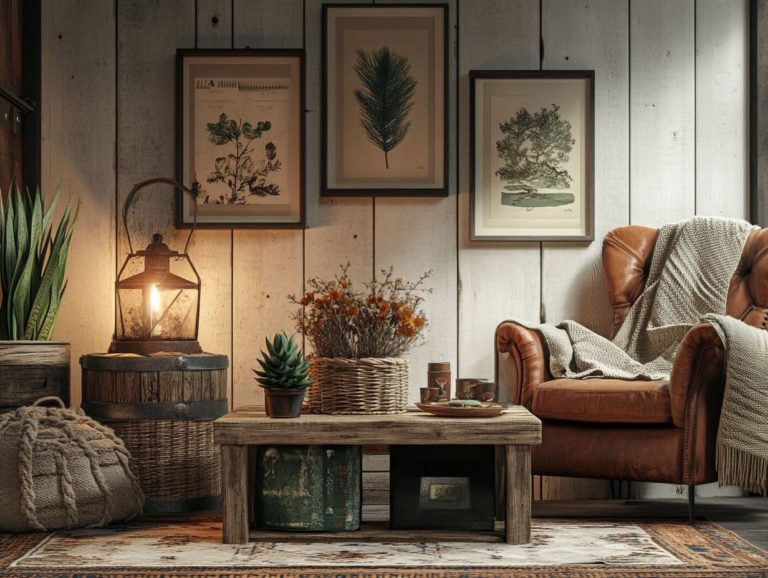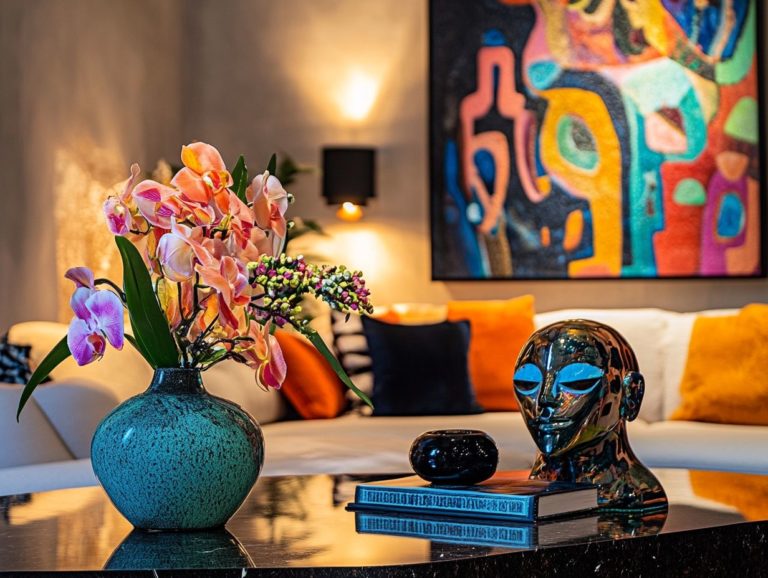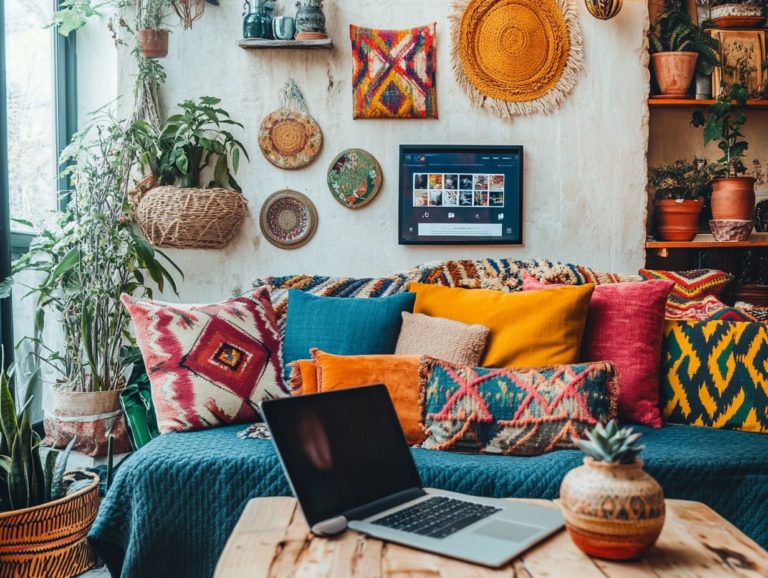The Influence of Cultural Heritage on Decorative Items
Cultural heritage plays an important role in shaping decorative items. It weaves stories and traditions into every piece that adorns your space.
Intricate designs reflect historical significance. Vibrant colors embody the spirit of a community, enriching your surroundings and connecting you to your roots.
This article explores the impact of cultural heritage on decorative styles. Discover examples, preservation efforts, and the important topic of cultural appropriation.
Contents
Key Takeaways:
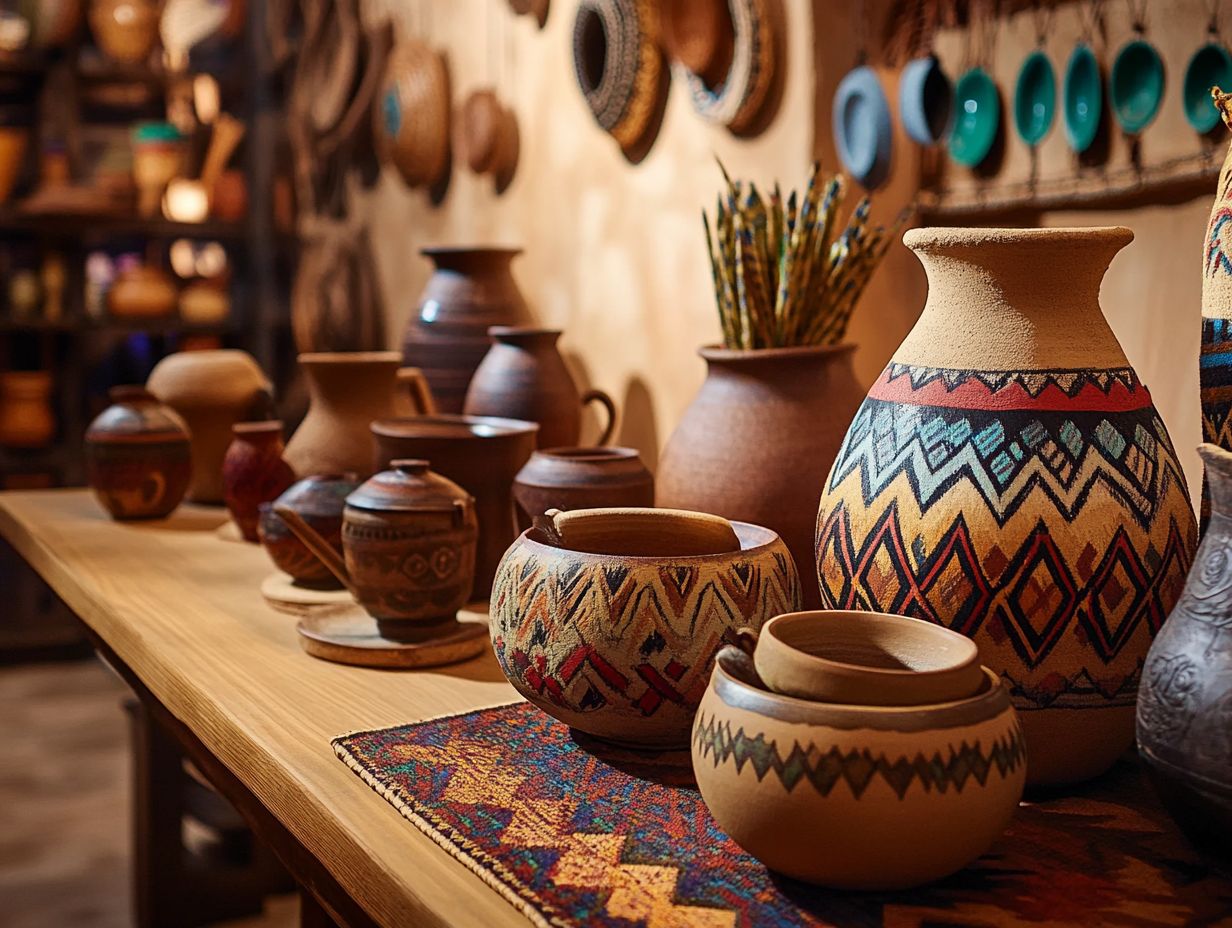
- Cultural heritage shapes the design of decorative items, reflecting the values, beliefs, and traditions of a culture.
- Incorporating cultural elements into decorative styles adds depth and meaning, bridging the past and present.
- As the demand for authentic decorative items grows, preserving and promoting cultural heritage in design becomes increasingly important.
The Importance of Cultural Heritage in Decorative Items
Cultural heritage holds an important role in decorative items, intertwining family traditions, cultural diversity, and ethnic design. This heritage guides your interior design choices and tells stories through decorative accents that represent cultural symbols from around the world.
By incorporating these elements into your home decor, you create spaces that resonate with your roots and showcase a unique heritage that honors past generations while celebrating cultural diversity.
Understanding the Significance of Cultural Heritage
Understanding the significance of cultural heritage is crucial for creating decorative items that resonate with your identity and story. This understanding enables you to weave captivating narratives into your home decor, showcasing connections to family traditions and historical backgrounds.
For example, displaying handcrafted textiles like Mexican serapes or Japanese noren curtains can highlight the rich heritage that shapes your family, while adding a vibrant flair to your living space. Displaying heirloom pottery or culturally significant artwork evokes cherished memories and stories from your ancestry, transforming your walls and shelves into a personal gallery celebrating your cultural pride.
By blending various cultural elements, such as African carved sculptures and Scandinavian minimalism, you can create a harmonious environment that reflects the diverse influences shaping your life.
Influence of Cultural Heritage on Decorative Styles
The influence of cultural heritage on decorative styles is profound. It shapes the aesthetics and elements of home decor, weaving a rich tapestry of traditions and practices from around the globe.
When you embrace these diverse influences, your space reflects a world infused with history, artistry, and meaning.
Examples of Cultural Elements in Decorative Items
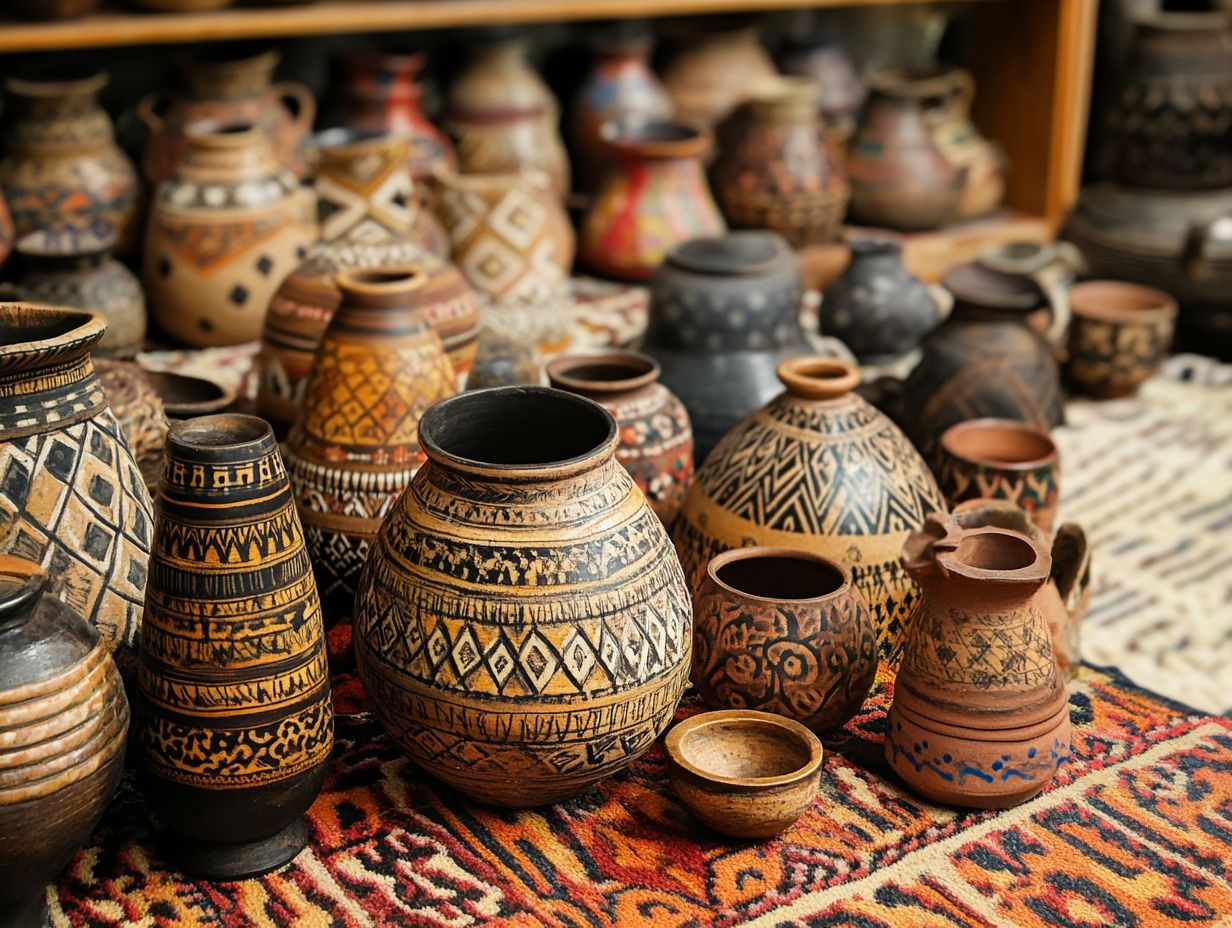
Examples of cultural elements in decorative items beautifully illustrate the rich tapestry of global traditions. Imagine incorporating pieces like Moroccan rugs, Indian sari fabrics, Japanese design accents, and Latin American folk art into your home.
These unique artifacts do more than enhance your aesthetic; they act as storytellers, reflecting the history, beliefs, and values of diverse communities. Each item, from the intricate patterns of a Persian carpet to the vivid colors of a Mexican papel picado, evokes a distinct sense of place and memory.
By weaving these elements into your home decor, you elevate your living space and pay tribute to the many cultures that have shaped our world. This practice fosters an appreciation for art and skill while highlighting the importance of preserving these cultural narratives for future generations.
Cultural Heritage Preservation in Decorative Items
Protecting cultural heritage in decorative items is vital and rewarding for ensuring that stories, traditions, and artistic expressions are passed down through generations. This practice allows future communities to establish a deep connection with their roots, enriching their identities and fostering belonging.
Efforts to Preserve Cultural Heritage
Your efforts to preserve cultural heritage are key for maintaining the richness of global diversity. Communities unite to safeguard their decorative items and traditions.
Local artisans collaborate with non-profit organizations, and cultural centers host workshops. These initiatives educate individuals about the significance of their heritage. For example, the ‘Heritage Craft Revival’ program champions traditional techniques in crafting textiles and pottery. This ensures that skills passed down through generations are not lost. The ‘Decorative Arts Conservation Society’ organizes events that focus on restoring and preserving artifacts, giving community members the chance to engage hands-on in the process.
Such endeavors do more than protect physical items; they inspire a profound sense of pride and connection among all participants.
Impact of Cultural Heritage on Decorative Trends
The influence of cultural heritage on decorative trends is significant, shaping design aesthetics and guiding the choices you make in curating your home decor.
This rich tapestry of history and tradition informs your style and enriches your living space with layers of meaning and connection.
How Cultural Heritage Shapes Decorative Choices
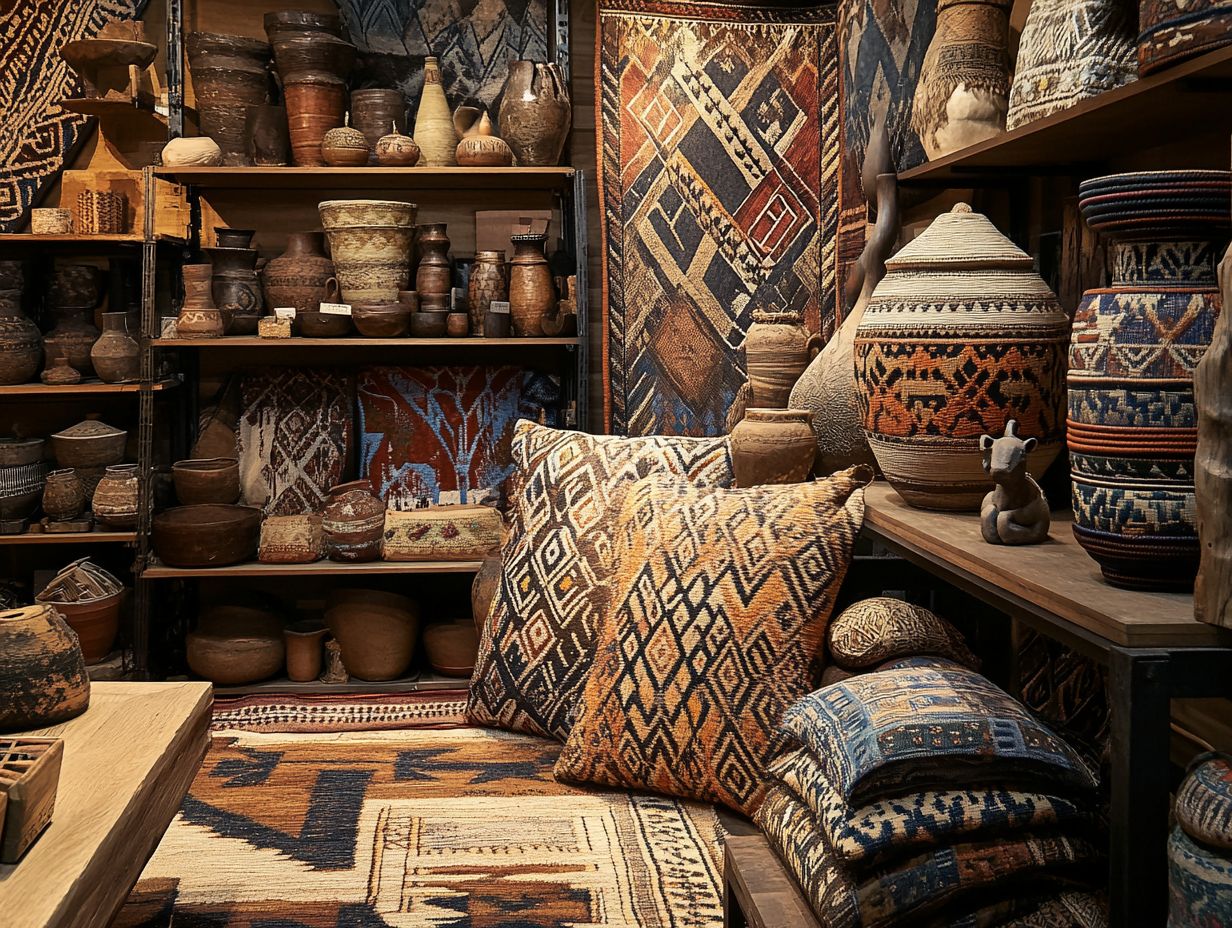
Cultural heritage plays an important role in shaping your decorative choices, guiding you toward home decor that reflects your background and embraces the art of storytelling.
For many, the selections made for their living spaces become a canvas for expressing identity and honoring cherished traditions. From vibrant textiles that echo ancestral crafts to intricate patterns imbued with historical significance, every element in your decor tells a unique story. The presence of cultural symbols be it artworks, sculptures, or thoughtfully chosen color palettes can evoke a profound sense of nostalgia and belonging.
As you curate your personal spaces, you seek out pieces that resonate with your familial roots. This ensures that your home is not just a showcase of style but also a meaningful tribute to the cultures you hold dear.
Cultural Appropriation in Decorative Items
Cultural appropriation in decorative items presents a nuanced dilemma. It invites you to consider the ethical implications of utilizing cultural heritage in your home decor. This complex issue challenges you to reflect on the respect and understanding that should accompany the incorporation of diverse cultural elements into your living space.
Explore and embrace your culture with respect and understanding.
Recognizing and Avoiding Cultural Appropriation
Recognizing and avoiding cultural appropriation is crucial for helping to respect and appreciate different cultures in the world of home decor.
By exploring the deeper meanings behind specific designs, symbols, or decorative items, you can make informed choices that genuinely honor their origins. Take a moment to reflect on the stories behind each piece, ensuring they aren t trivialized for mere aesthetic pleasure.
When curating your living space, take the time to learn about the cultural heritage of your decor pieces. Opt for collaborations with artisans from those backgrounds instead of reaching for mass-produced items. This thoughtful approach enriches your personal space and elevates the voices and traditions of the cultures being celebrated.
Frequently Asked Questions
What is cultural heritage?

Cultural heritage refers to the beliefs, traditions, practices, and artifacts that are passed down from generation to generation within a particular culture.
How does cultural heritage influence decorative items?
Cultural heritage significantly impacts decorative items as they often reflect the values, customs, and aesthetics of a particular culture. These items may also incorporate traditional techniques and materials unique to a specific culture.
What are some examples of decorative items influenced by cultural heritage?
- Textiles
- Pottery
- Sculptures
- Paintings
- Jewelry
How can cultural heritage be preserved through decorative items?
Cultural heritage can be preserved through decorative items by incorporating traditional techniques, materials, and designs into modern pieces. This helps keep cultural traditions alive and allows them to be passed down to future generations.
Why is it important to consider cultural heritage when purchasing decorative items?
Considering cultural heritage when purchasing decorative items allows for a deeper appreciation of the item and its significance within a specific culture. It also supports and promotes the preservation of cultural traditions and practices.
How can cultural heritage and decorative items promote cultural diversity?
Cultural heritage and decorative items promote cultural diversity by showcasing the unique and diverse traditions, values, and aesthetics of different cultures. They can also serve as a means of cultural exchange and understanding between different communities.

